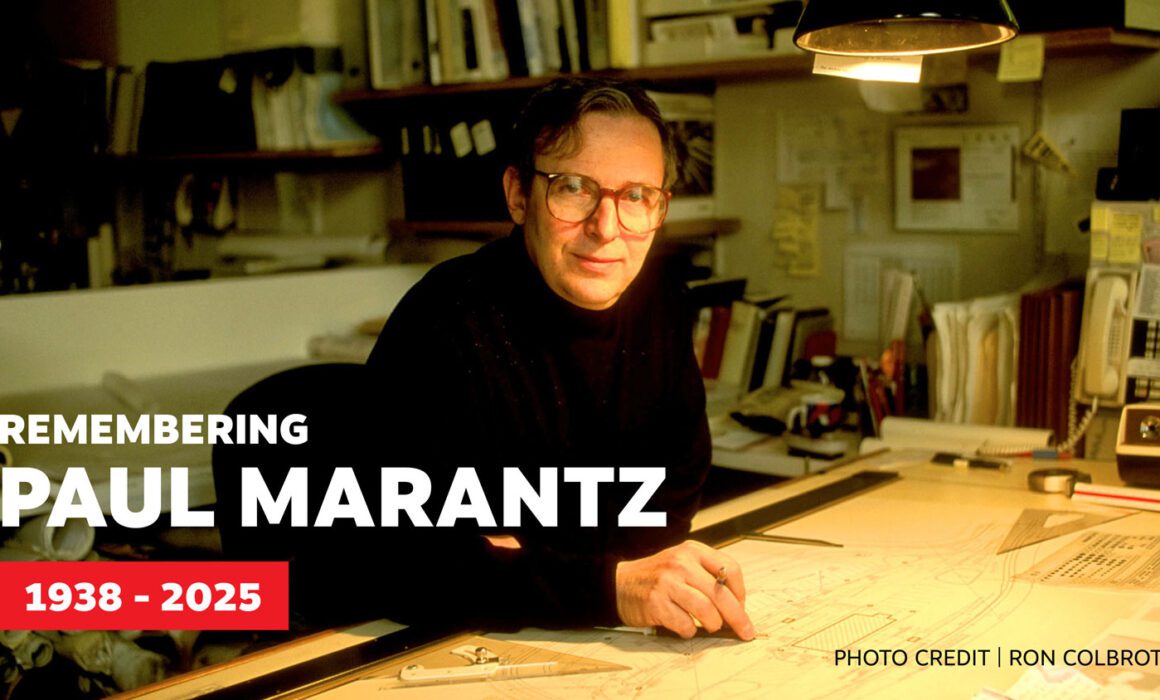Remembering Paul Marantz
Photo Credit: Ron Colbroth
Although our hearts are heavy, we celebrate the life of Paul Marantz — a man whose light, both literal and metaphorical, brightened every corner it touched. From the moment he first flicked a switch in a marionette workshop at age ten, Paul’s boundless curiosity and playful spirit set him on a path to transform how we experience the world around us. By eleven, he had already fashioned a miniature theater with working lights and dimmers; in his teens, he brought modern dance recitals to life with his talent for illumination. At Oberlin College, and later through graduate work at Case Western Reserve University and Brooklyn College, he honed his craft, always driven by wonder and a desire to evoke emotion through light.
In 1971, Paul and Jules Fisher sowed the seeds of what would grow into Fisher Marantz Stone (FMS), a beacon of innovation in architectural lighting design. Together, they embarked on a lifelong partnership defined by joyful experimentation and a shared passion for creative exploration. Over the decades, Paul’s visionary touch could be felt from the electric pulse of Studio 54 and the soaring glow of the Times Square New Year’s Eve Ball, to the solemn serenity of the 9/11 Tribute in Light. He cast Dubai’s Burj Khalifa in a majestic glow, revived the grandeur of Radio City Music Hall and Grand Central Terminal, and infused the Rose Main Reading Room of the New York Public Library with an inviting warmth. Many people experienced his work without even knowing his name, carried along by the mood and magic he so masterfully conjured.
Paul’s genius lay not only in technical prowess — the custom-spun reflectors, the delicate lenses, the ingenious assemblies of tabs, slots, and springs — but in his exceptional eye and his deep empathy for space and story. He understood that the right light in the right place could stir memories, inspire wonder, and bring people together. His peers recognized this: architects like I.M. Pei sought him out again and again, knowing that Paul’s instincts would elevate his vision.
Though awards and accolades — multiple Lumen Citations, honors from the Illuminating Engineering Society and the International Association of Lighting Designers, and praise from architectural critics like Herbert Muschamp of the New York Times — attested to his brilliance, it was Paul’s warmth, his quick laughter, and his unquenchable curiosity that endeared him to everyone he met. He was a tinkerer at heart, ever eager to repurpose, reimagine, and reinvigorate. His delight in discovery was contagious, and his joy, radiant.
Today, as we mourn his passing, we also give thanks. Paul Marantz illuminated our world in both grand and subtle ways, forever altering how we see, feel, and remember. Though his voice is silent now, his light endures — in every breathtaking skyline, every softly glowing gallery, every shared moment of awe under a perfectly placed beam. We will carry his legacy forward, striving to honor his spirit by seeing beauty where others may see only shadow, by finding innovation in the simplest materials, and by never ceasing to wonder. Farewell, dear Paul — your light will never fade.

